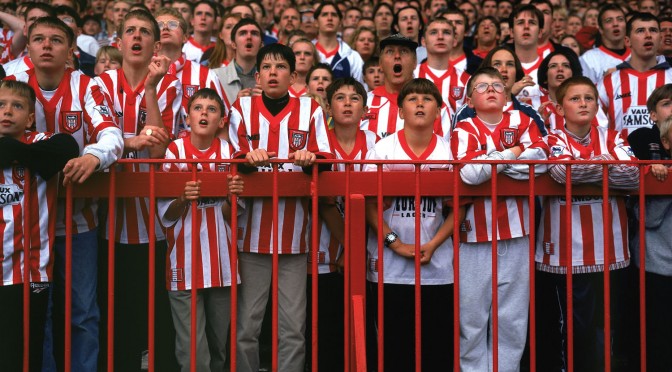Here we are, ‘Survival Sunday’, this decrepit season’s death rattle.
Either Hull City or Newcastle United will, come tea-time today, have secured their Premier League status for another year despite supporter boycotts, cocaine abuse and managers accusing players of getting themselves sent off deliberately.
Should they both lose, which is likely considering just how absolutely rancid these two teams are, Newcastle’s meagre 36 points will have proved just about enough.
Whereas managers once used to talk of ‘the 40-point mark’ as a some kind of life-giving panacea, it has been four years since a team needed so many to stay up (Wolverhampton Wanderers in 2010/11). Whisper it, but because of declining standards, the number of points needed to stay in Premier League has slowly fallen since the turn of the century.
How do you know that?
We took a look at the final league tables for each year since the division was reduced from a 42-game season to a 38-game season in 1995/96. This allowed us to calculate the probability of avoiding relegation for a series of points totals.
Remember, there are few certainties in football. This data is based simply on past Premier League seasons, none of which have been freak anomalies on the edge of mathematics with teams so bad they lose all but one or two games.
It should be noted that 64 points is the amount needed to absolutely guarantee safety in the division. A club could, however, potentially stay up on a total as low as 6.
So, how many points does a team need to probably stay up?
First things first, no team since 1995/96 has stayed up with 30 points or less. There’s your minimum standard. In 2009/10, both Hull and Burnley were relegated with 30, ahead of a cash-strapped Portsmouth side who earned only 19.
If, next season, Newcastle’s owner Mike Ashley is particularly eager to pinch the pennies, history suggests he could only invest enough into his side to earn 31 points and still keep them up, but there would be a slim 5.26 per cent chance of success.
At the opposite end of the scale, West Ham United’s 2002/03 side, which slotted young talents like Joe Cole and Jermain Defoe alongside established performers in Paolo di Canio and Frédéric Kanouté did not do enough to stay up despite taking 42 points.
Somebody has to be the unlucky outlier in this dataset and, unfortunately for the Irons, it was them. Based on this information, a side that earns over the traditional target of 40 now has a very healthy 94.74 per cent chance of avoiding the drop.
The most interesting point to take from this information, however, is the jump from 36 points to 37. Whereas the former has only been enough to secure Premier League safety 44.74 per cent of the time, the latter offers a 68.42 per cent chance of survival – above two-thirds.
It might not be a round and even number but maybe 37 points is the new target that managers should aim for when facing a battle at the sharp end of the league table.
Featured image: Homes of Football (Wikipedia)



